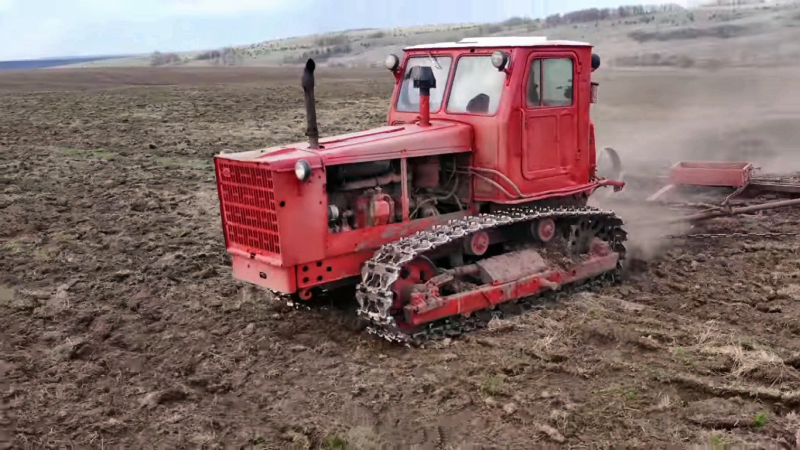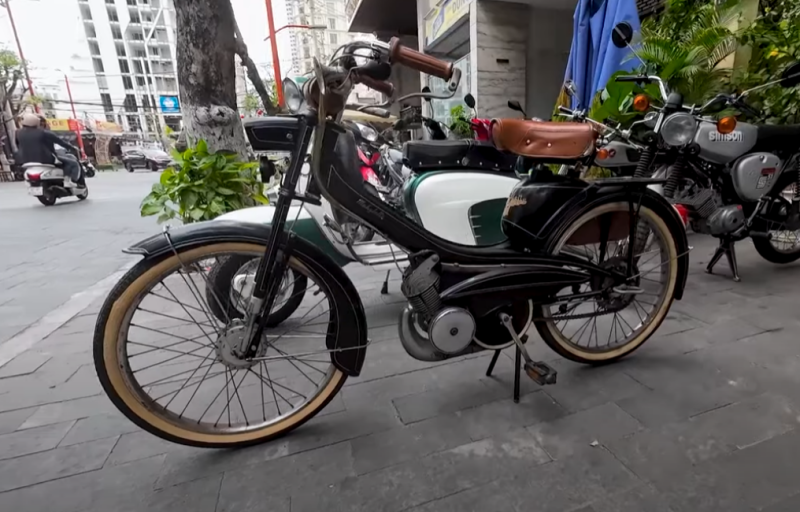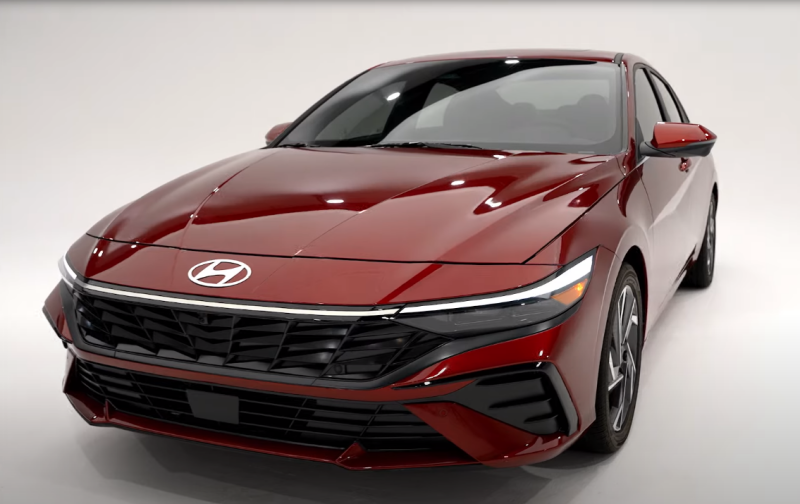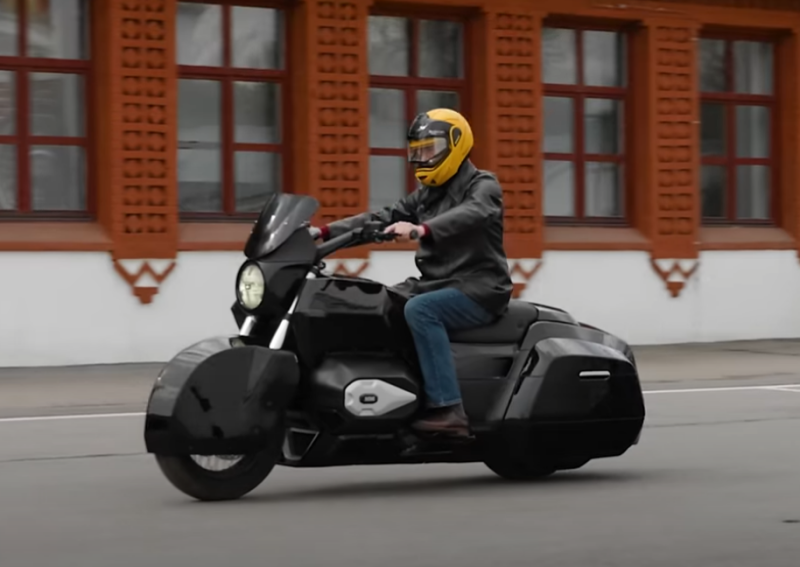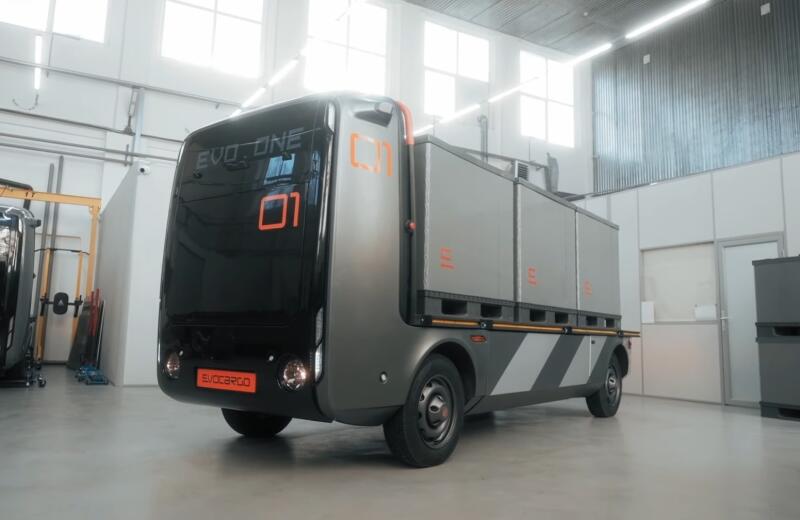One of the first vehicles in this direction were the DT-54 and the famous “Stalinets”. To ensure that the equipment can cope with complex tasks, a semi-rigid type of suspension is used on both. It is clear that in such conditions the work of a machine operator became extremely uncomfortable. But the chosen solution made it possible to maximize the traction efficiency of the caterpillar tractor.
 The T-4 crawler tractor is getting ready for work. Photo: youtube.com
The T-4 crawler tractor is getting ready for work. Photo: youtube.comDuring trial operation, several design weaknesses were discovered in the DT-54. This list includes, among other things, low engine power. The device was returned for revision, which took place with varying degrees of success throughout the 50s. This is how the 70-horsepower experimental DT-70 (which was a modernization of the earlier DT-64) appeared.
New manufacturer for a promising model
Previous experience has shown that the primary task requires a radical solution. In 1960, the day after Soviet students went on summer vacation, official documents were sent to the USSR Ministry of Agriculture. They included a report on the design and experimental work carried out by the engineering group of the Altai plant to create a new family of crawler tractors.
Four years later, a prototype of the agricultural T-4 appeared, belonging to the 4th thrust class. At the beginning of next year, production of the first production model of the Altai Tractor Plant began.
By design, he was clearly a rural hard worker. Although, over time, it has found its application in other sectors of the economy. To ensure maximum unification with various types of attachments, the creators took into account several points:
✅ body shape
✅ cabin design
✅ place of its installation
The tractor received a fairly powerful power unit. This gave him the opportunity to successfully work in deep plowing of the soil or when harvesting crops in difficult conditions. A good engine also ensured good maneuverability of the vehicle.
As a result, the T-4 had six years of continuous production and a positive assessment from rural workers. Indeed, at that time, the scope of its application (and power characteristics as well) turned out to be unprecedented, setting the tone for future models of this type.
 The T-4 tractor can do any job. Photo: youtube.com
The T-4 tractor can do any job. Photo: youtube.comThis tractor also played a major role in the development of virgin lands. The heavy soils available there proved to be strong enough for the powerful equipment from Altai. Its main advantage was considered to be extremely low ground pressure, amounting to about 0,44 kg/sq. cm.
Suspension features and geography of application
In addition to Kazakh fields, this tractor also found its use during agricultural work in Siberia. Its powerful engine and reliable design led to the demand for equipment at many construction sites in different regions of the Soviet Union. Here the T-4 was often used as a bulldozer.
But to have such advantages in their work, the creators had to seriously sacrifice comfort when operating the equipment. The frame design and semi-rigid suspension of the T-4 made long-term work on it extremely inconvenient. Soviet tractor drivers repeatedly complained about enormous shaking when driving. It was caused by the almost complete absence of any softening elements in the suspension.
 There is enough power to move confidently in the snow. Photo: youtube.com
There is enough power to move confidently in the snow. Photo: youtube.comVery soon the not very cheerful nickname “iron” stuck to him. Perhaps its meaning will not be entirely clear to young people. Therefore, we will try to explain. Cast iron irons of the past did not have any inserts, being a completely rigid metal structure.
Unfortunately, very soon it became clear that when using T-4 on classic soils, its effectiveness remains only when plowing the fields. In addition, the tracks and massiveness made the vehicle very slow. Its speed of 9 km/h was only suitable for use in plowing. For this reason, the following picture was often observed on some farms: a caterpillar “iron” tractor on a summer “fun”.
Power unit and advantage over predecessors
The first generation equipment had two engines installed at once. The main engine was a 90-horsepower diesel engine, and the “starter” was a 10-horsepower gasoline engine. In principle, this practice was common in those years, especially in relation to tracked tractors. The device used in land reclamation and road work had the following indicators:
✅ five gears forward
✅ maximum speed – 7,6 (after modernization – 9) km/h
✅ four low gears (minimum speed – 1,8 km/h)
✅ five gears back
After the 7,2-ton DT-70 tractor underwent extensive testing in the late 50s, it seemed to many that it would go into production at the beginning of the next decade. But everything happened a little differently. After the transfer of technical documentation to Altai, the T-60 appeared in the mid-4s, which was essentially an improved modification of the first.
 Workdays of the old T-4. Photo: youtube.com
Workdays of the old T-4. Photo: youtube.comAll this was confirmed during joint inspections, in which several models of tractors participated. T-4 showed much better efficiency in performing field work: over DT-54 (at least 60%) and DT-75 (about 30%). On complex soils with high resistivity, the performance of Altai equipment turned out to be one and a half times higher than that of other samples of tested devices. Here are some of the characteristics of the T-4 engine (in parentheses are the indicators of the AM-01 modification):
✅ unit model – A01-M
✅ four-cylinder (six), four-stroke
✅ gearbox: mechanical with gearbox
✅ power - 90 (130) l. With
To start the engine there was an electric starter; as an alternative, there was a cord for manual winding. If the first one came out, it was an undoubted lifesaver. The power unit turned out to be quite noisy and afraid of overheating. Fuel consumption was quite low, which made it possible to fully operate the equipment for two shifts without refueling:
✅ tank capacity - 320 l
✅ tractor design weight – 7,6 t
✅ track – 1384 mm
✅ ground clearance - 362 mm
Long-term use of equipment in conditions where the temperature of the water in the cooling system approached the boiling point had a negative impact on its engine. There are frequent cases of bursting of jumpers in the cylinder head or failure of the cylinder head. A definite solution was the installation of a wider radiator from the T-150, which made it possible to keep the water temperature under control even under increased loads.
Modifications of a successful crawler tractor
The widespread use of technology allowed engineers to begin its gradual modernization. The first was the T-4M modification, which received the highest medal at the Moscow international exhibition in 1966. Later, a special option for high snow cover and wetlands appeared - TB-4. He became a favorite of the Soviet timber industry for many years.
 Engine of the T-4 caterpillar tractor. Photo: youtube.com
Engine of the T-4 caterpillar tractor. Photo: youtube.comBut the designers moved on, offering even more advanced options. So in 1969 the skidder TT-4 appeared. After two years of modifications, it went into production, replacing the T-4 on the production line, the production of which was completed in 1970. At first, the new product was assembled in small quantities, but by the middle of the decade, the TT-4 became the leader in its sector in terms of production volume.
And from 1970 to 1998, the ATZ enterprise assembled an improved modification of the T-4M, which received the T4-A index. In addition to a more powerful engine, the equipment had a modern appearance and equipment.
